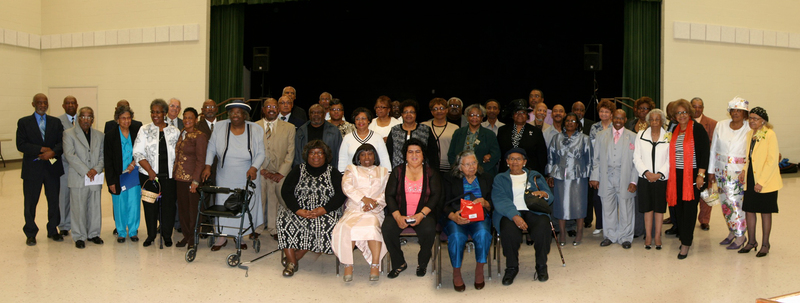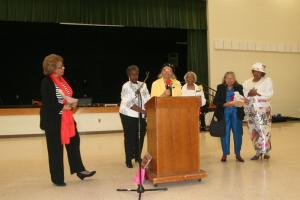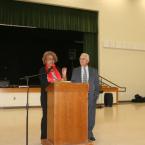Milton’s 196C school reunion draws mixed memories

More than 120 former students, teachers, their families and friends recently gathered for a Milton 196C school reunion-luncheon in Georgetown. The 196C school building and its reason for being are gone, relegated to the dustbin of history, yet memories of the school’s students and teachers live on.
Built in the 1920s for black grade-school students living in and near Milton, school 196C was one of many schools built throughout state at a time when Delaware and the nation’s segregationist laws didn’t allow black students to go to school with white students.
The C in a school’s designation stood for colored, a designation that would endure for more than four decades. Still today, education experts say many schools remain segregated, but not for solely race-based reasons. Now it is based on where people live – often in largely segregated communities – a result of class, housing costs and income differences.
Remembering 196C
Jack Clark went to 196C in the 1930s. He said the school was where he learned the four Rs – readin’, ritein’, ‘rithmic and recess. "Recess was my favorite," he said.
Clarke said, unlike students today, those at 196C learned to print and write cursively. He said the older boys served as school custodians; they swept the floor, cleaned blackboards and beat chalk dust out of erasers.
He said older boys would also cut chalk in a way that would make it emit a screech when on the blackboard that mostly irritated girls.
“Around this time of year, we’d wrap the maypole; the maypole dance. Remember that?” Clark asked, getting back “Sure do,” from several former classmates. One woman in her 20s could be heard whispering, mostly to herself, “What’s a maypole?”
“How many of you remember cloakrooms? They were really neat,” Clark said. Again answers of yes could be heard around the room, and the same woman quietly wondered what a cloakroom was.
The dictionary says the word cloakroom started to be used in the 1850s, and more than 100 years later, although an antiquated idea, cloakrooms were still in use.
Anne Johnson, a 196C student said, teachers “Not only did they teach us, they loved us.” She said the school was always warm and students had breakfast every morning.
She said when her family moved to New York, she was supposed to start third-grade but after testing she was put into fourth-grade. Johnson said her education at Milton’s 196C had given her a jump-start.
Anna Henry was Milton Town Council member Esthelda Selby Parker’s first-grade teacher at 196C.
Henry, 85, said when she was teaching, she never allowed anyone else to discipline her students.
She said students today are sent to the principal’s office for minor offenses where they do menial, meaningless tasks such as cutting paper. "Students need to be in the classroom,” she said.
“I just say over and over, it doesn’t make any difference to me how old you are, you are still my babies,” Henry said.
Ramona Parker, Esthelda’s mother, drove the school’s only bus.
“All you people who said that I was hard on you, unh-unh, we were hard on each other,” Parker said, producing laughter from her busload of noisy passengers.
Pearl Cirwithian said her family lived outside of town in the country. “We were four miles from school and we walked, me and my sister and my cousin. It was eight miles all together. The school bus didn’t concern us,” she said prompting more laughter.
Historical perspective
Martin Drew, a retired Delaware State University professor, has done extensive research on the state’s colored schools. He provided historical context for Milton’s school.
In 1878 a Quaker group, The Delaware Association for the Moral Improvement of Colored People, brought in white teachers from New Jersey, New York and Pennsylvania, Drew said.
He said during that period, school was open only for three months during winter because children were needed to help with agricultural work.
Drew read several names of teachers from the late 1800s and after each he would ask “Do any of you remember her?” Invariably, the answer was no because although several seasoned citizens were present, none was in their 100s.
In 1897, the state took over white and colored schools and they remained segregated, Drew said.
He said Milton’s 196C was built and opened in 1921, and Effie Mae Prettyman was its first teacher. She taught into the mid-1940s, and a few people remembered her. Noble Prettyman, former Milton Town Councilman and current Cape Henlopen School District Board member, is Effie Mae’s son. “Then in 1949, I see this name throughout: Viola W. Piper. Did anybody know her?” Drew asked. This time nearly everyone answered with a gleeful yes or sure did.

























































